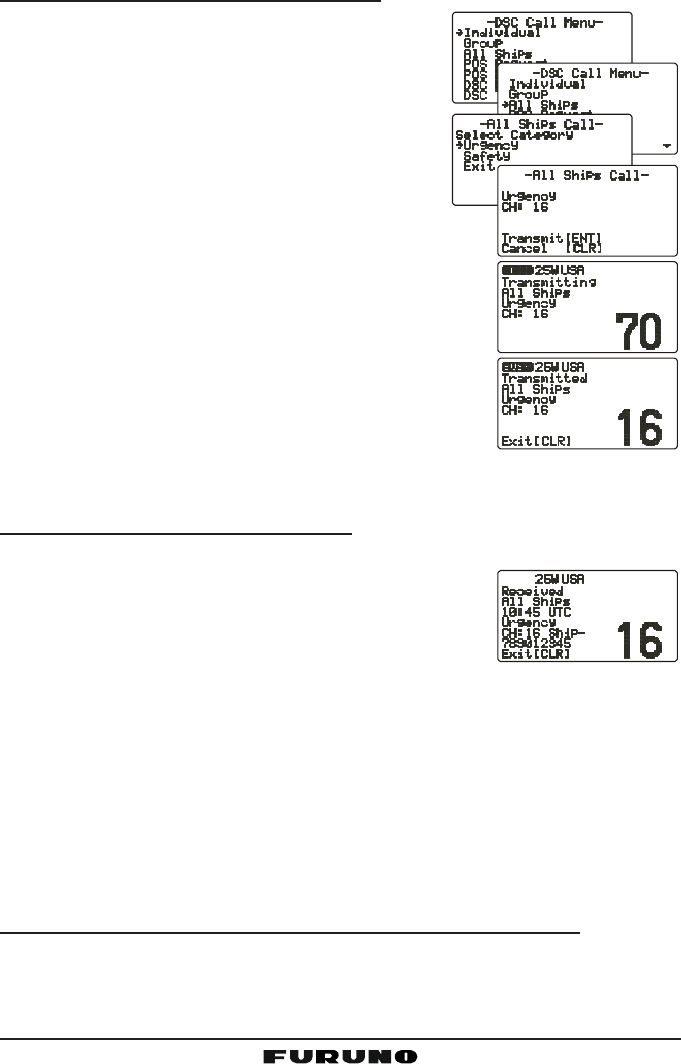
Page 39FM-4000
11.4.1 Transmitting an All Ships Call
1. Press the
[
CALL
(
MENU
)]
key to show the “
DSCDSC
DSCDSC
DSC
Call MenuCall Menu
Call MenuCall Menu
Call Menu.”
2. Turn the CHANNEL selector knob to select “
AllAll
AllAll
All
ShipsShips
ShipsShips
Ships.”
3. Press the
[
ENT
]
key. (To cancel, turn the
CHANNEL selector knob to select “
ExitExit
ExitExit
Exit.”)
4. Turn the CHANNEL selector knob to select the
nature of call (“
UrgencyUrgency
UrgencyUrgency
Urgency” or “
SafetySafety
SafetySafety
Safety”), then press
the
[
ENT
]
key.
5. Press the
[
ENT
]
key again to transmit the selected
type of All Ships call.
6. After the All Ships call is transmitted, the transceiver
switches to CH16.
7. Listen to the channel to make sure it is not busy,
then key the microphone and say “PAN PAN PAN”
or “Securite, Securite, Securite” depending on the
priority of the call. Then announce both your call sign
and the channel you wish to switch to for communi-
cations.
11.4.2 Receiving an All Ships Call
1. When an All Ships call is received, an emergency alarm sounds.
The radio will automatically change to CH16 and
the LCD shows the MMSI of the vessel transmitting
the All Ships call.
2. Press any key to stop the alarm.
3. Monitor CH16 or traffic channel until the Urgency voice communication is
completed.
11.5 INDIVIDUAL CALL
This feature allows the FM-4000 to contact another vessel with a DSC VHF
radio and automatically switch the receiving radio to a desired communica-
tions channel. This feature is similar to calling a vessel on CH16 and request-
ing to go to another channel (switching to the channel is private between the
two stations).
11.5.1 Setting up the Individual / Position Call Directory
The FM-4000 has a DSC directory that allows you to store a vessel or person’s
name and the MMSI number associated with vessels you wish to transmit
Individual calls, position requests and position send transmissions.


















